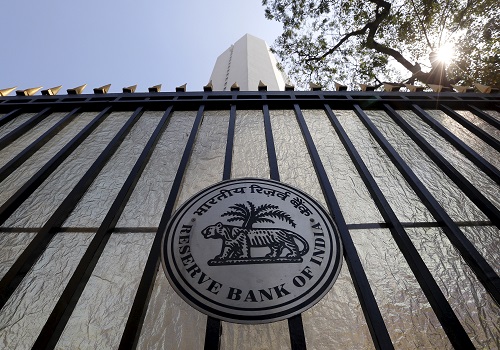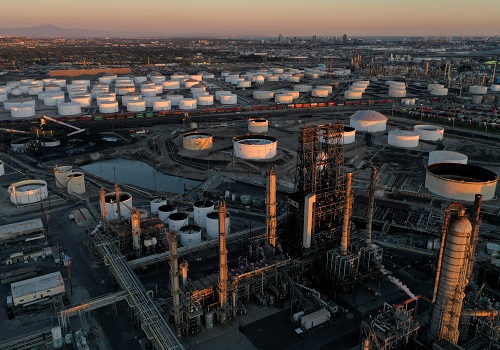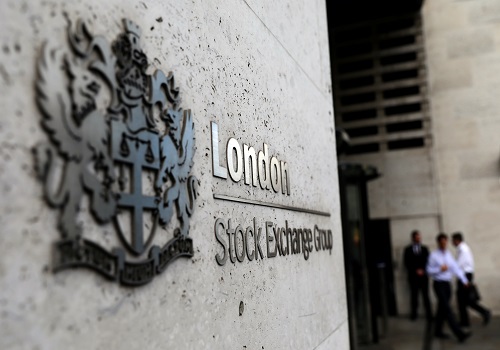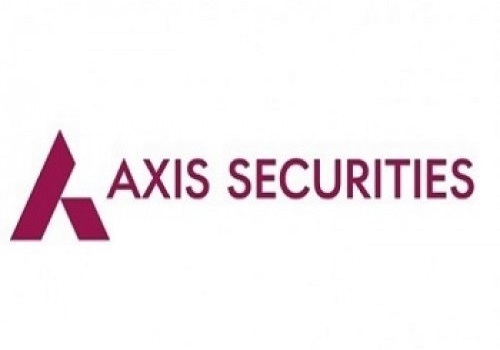Silver trading range for the day is 70385-73045 - Kedia Advisory

Follow us Now on Telegram ! Get daily 10 - 12 important updates on Business, Finance and Investment. Join our Telegram Channel
Gold
Gold displayed a 0.42% increase, settling at 61878, propelled by a weakened dollar amidst reactions to U.S. producer price inflation data and varied comments from Federal Reserve officials. The housing starts for January plummeted by 14.8% to 1.331 million units, reflecting ongoing pressures on the commercial real estate sector. Notably, the December data was revised upward, suggesting some resilience in the housing market. Meanwhile, the Producer Price Index (CPI) for January surged by 0.3%, surpassing economists' expectations of a 0.1% increase, indicating a hotter-than-anticipated inflation trend. Over the last 12 months, headline inflation rose by 0.9%, with inflation persisting in producer prices, exemplified by the Core PPI's 0.5% increase, up from December's unchanged reading. The Federal Reserve's regulatory official underscored an elevated rate of flagged issues at banks in the past year, leading to additional examinations at firms with substantial unrealized losses. Fed Vice Chair for Supervision, Michael Barr, emphasized a keen focus on firms' management of commercial real estate risk amidst ongoing post-pandemic challenges. From a technical standpoint, the market experienced short-covering, indicated by a 2.55% drop in open interest to 13399, while prices surged by 256 rupees. Gold currently finds support at 61585, with a potential downward movement testing 61290 levels. Conversely, resistance is anticipated at 62040, and a breakthrough could push prices towards 62200.
Trading Ideas:
* Gold trading range for the day is 61290-62200.
* Gold gains as dollar failed to hold gains after mixed Fed officials comments.
* Housing starts declined by 14.8% in January, but December's data was revised upward
* Producer Price Index (CPI) rose 0.3% last month, higher than expected
Silver
Silver saw a notable 1.39% gain, settling at 72112, as investors evaluated the likelihood of a potential Fed rate cut in May following fresh US data. January's producer price index surpassed expectations, rising by 0.3%. On the monetary policy front, Atlanta Fed President Raphael Bostic acknowledged progress in tackling inflation but expressed caution regarding rate cuts. In contrast, Chicago Fed President Austan Goolsbee suggested that the central bank should not delay rate cuts. U.S. retail sales for January disappointed, dropping by 0.8%, largely influenced by declines in auto dealership and gasoline service station receipts. The decline may have been exacerbated by winter storms, with December's data also revised lower to a 0.4% increase. On the employment front, initial claims for state unemployment benefits fell by 8,000 to a seasonally adjusted 212,000 for the week ending Feb. 10, suggesting resilience despite recent high-profile layoffs in the technology and media sectors. With a tight labor market, laid-off workers may be finding new jobs relatively easily. Consumer spending in the fourth quarter contributed to a robust 3.3% annualized growth pace for the economy. From a technical perspective, short-covering was evident, as open interest dropped by 11.61% to 21665, while prices surged by 991 rupees. Silver is currently finding support at 71250, with a potential dip testing 70385 levels. Conversely, resistance is expected at 72580, and a breakthrough could lead to prices testing 73045. Traders are closely monitoring these developments to navigate the silver market amidst evolving economic indicators and divergent Fed views.
Trading Ideas:
* Silver trading range for the day is 70385-73045.
* Silver rose as investors continued to assess the chances of a first Fed rate cut in May
* Fed’s Bostic mentioned progress in fighting inflation, but is cautious about rate cuts.
* Fed’s Goolsbee suggested that the central bank should not delay rate cuts.
Crude oil
Crude oil posted a 0.37% gain, settling at 6482, driven by geopolitical uncertainties in the Middle East and OPEC+ efforts to control oil supply. The International Energy Agency (IEA) cautioned about global oil demand losing momentum, citing a significant drop in Chinese demand. The IEA revised its 2024 global oil demand forecast slightly lower to 1.22 million barrels per day from 1.24 million bpd. Additionally, it anticipated a supply increase of 1.7 million bpd this year, surpassing the previous estimate of 1.5 million bpd. In North Dakota, despite reaching a record high in the number of producing wells, oil production fell by 6,000 barrels per day in December to 1.27 million bpd. January's output is expected to be lower due to a cold snap that briefly halved production, with a warning from the state's Industrial Commission that it might take a month for output levels to fully recover. Iraq affirmed its commitment to OPEC decisions, including a second voluntary cut announced in December, pledging not to produce more than 4 million bpd, according to Oil Minister Hayan Abdel-Ghani. Iraq's current crude oil exports range between 3.35 million and 3.4 million bpd. From a technical perspective, the market witnessed fresh buying, as open interest increased by 1.54% to settle at 5020, while prices rose by 24 rupees. Crude oil is currently finding support at 6402, and a breach could lead to a test of 6323 levels. On the upside, resistance is anticipated at 6539, with a move above potentially pushing prices towards 6597.
Trading Ideas:
* Crudeoil trading range for the day is 6323-6597.
* Crude oil gains amid geopolitical uncertainties and OPEC+ efforts to curb oil supply.
* Oil output in North Dakota fell in Dec., despite record well count
* Iraq committed to OPEC, will not produce more than 4 mln bpd -minister
Natural gas
Natural gas settled with a slight decline of -0.22%, closing at 133.3, as near-record output and a smaller-than-expected storage withdrawal last week contributed to market dynamics. US utilities withdrew 49 billion cubic feet of natural gas from storage, falling short of market expectations of a 67 bcf draw due to warmer-than-normal weather suppressing heating demand. The report indicated that gas in storage is currently 15.9% above the seasonal norm. The U.S. Energy Information Administration (EIA) projected a higher average natural gas spot price in 2024 and 2025 compared to the previous year, but it is expected to remain below the $3.00-per-million British thermal units (MMBtu) mark. The EIA forecasts an increase in natural gas prices as demand outpaces supply in 2024, with demand expected to rise by 2.3 billion cubic feet per day (Bcf/d), while supply remains relatively flat. In 2025, supply and demand are expected to grow at similar rates, with supply slightly exceeding demand. In December, natural gas production in North Dakota reached a record 3.525 billion cubic feet per day (bcfd), surpassing the previous high of 3.469 bcfd in November, while gas flaring eased. From a technical standpoint, the market experienced long liquidation, evidenced by a 5.1% drop in open interest to 68584, while prices declined by -0.3 rupees. Natural gas is currently finding support at 131.2, and a breach could lead to a test of 129.2 levels. On the upside, resistance is anticipated at 135.9, with a move above potentially pushing prices towards 138.6.
Trading Ideas:
* Naturalgas trading range for the day is 129.2-138.6.
* Natural gas dropped on rising, near-record output
* US utilities pulled 49 bcf of natural gas from storage, less than market expectations of a 67 bcf draw.
* US natgas price to average higher in 2024 and 2025 – EIA
Copper
Copper demonstrated strength with a 1.18% gain, settling at 723.2, buoyed by diminishing inventory levels and expectations of increased economic support from China, the top consumer of the metal. The prospect of additional support from the Chinese government, potentially in the form of measures to boost consumption, has fueled optimism for heightened demand in the country's base metals sector. Copper's positive momentum was further accentuated by a substantial reduction in LME-registered warehouse inventories, reaching a six-month low at 132,525 tonnes. In the global economic landscape, U.S. consumer prices surpassed expectations in January, causing a reassessment of the pace and scale of potential interest rate cuts. As a result, Federal funds futures currently indicate no rate cut in March and less than a 50% probability of easing in May. Chinese manufacturing data, signaling a fourth consecutive contraction in the sector in January, triggered a decline in the Yangshan copper premium as industrial purchases slowed. Meanwhile, inventories in major Chinese warehouses surged over 120% year-to-date to nearly 70,000 tonnes. According to the ICSG, preliminary data for January suggests a 1% increase in world copper mine production over the first 11 months of 2023. From a technical standpoint, the market experienced short covering, evident in a 30.56% drop in open interest to 3051, while prices rose by 8.45 rupees. Copper currently finds support at 716.8, and a breach could lead to a test of 710.4 levels. On the upside, resistance is anticipated at 727.1, with a move above potentially pushing prices towards 731.
Trading Ideas:
* Copper trading range for the day is 710.4-731.
* Copper gains helped by falling inventory and expectations of more economic support from China.
* LME copper stocks dropped to 132,525 tonnes, reaching its lowest in six months.
* Cash-to-three month spread last traded at $88 a metric ton, compared to a record high of $113.3 on Feb 9.
Zinc
Zinc exhibited a robust 1.64% increase, settling at 214.3, driven by renewed expectations of a rate cut by the Federal Reserve in the second quarter following lackluster retail data from the U.S. The anticipation of looser monetary policy sparked increased industrial demand, particularly for economies connected to U.S. credit markets, bolstering the outlook for base metal inputs. However, challenges persist in the zinc market as the Russian Ozernoye mine announced a delay in zinc concentrate production until at least the third quarter of 2024, with full capacity ramp-up now expected in 2025. The mine, originally set to commence production in 2023, faced setbacks from Western sanctions and a fire damaging part of its plant in November. Zinc prices, influenced by concerns over projected surpluses and subdued demand amid China's property market challenges, face headwinds. Zinc inventories on the London Metal Exchange (LME) rebounded, rising by 14% over the past 10 days to reach a one-month high of 216,675 metric tons. This followed an 18% decline between late December and late January. On the Shanghai Futures Exchange, zinc stocks surged by 21% in just a week. Technically, the market observed short covering, with a 21.4% drop in open interest to 3163, while prices increased by 3.45 rupees. Zinc currently finds support at 211.7, and a breach could test 209 levels. On the upside, resistance is expected at 216, with a move above potentially pushing prices towards 217.6. Traders are carefully navigating zinc markets amid geopolitical factors, production delays, and evolving economic indicators.
Trading Ideas:
* Zinc trading range for the day is 209-217.6.
* Zinc gains after sluggish US retail data revamped bets of a rate cut by Fed.
* Support also seen amid expectations of more economic support from China.
* Russian new Ozernoye mine has delayed the start of zinc concentrate production until at least the third quarter of 2024
Aluminium
Aluminium closed with a slight decline of -0.5%, settling at 199.05, as a pessimistic industrial sentiment in China, the world's largest consumer of base metals, continued to weigh on the market outlook. Macroeconomic headwinds persist in China, casting shadows on the demand prospects for aluminium and other base metals. The share of available aluminium stocks of Russian origin in London Metal Exchange (LME)-approved warehouses remained stable at 90% in January. This comes amidst broader sanctions against Moscow over its actions in Ukraine, with the UK restricting physical delivery of Russian-made base metals from mid-December. Despite these restrictions, Russian metal continued to flow through LME-registered warehouses. The data showed a decline in Russian primary aluminium stocks on LME warrant to 286,750 metric tons in January from 338,375 in December. Federal Reserve policymakers are anticipated to delay any interest rate cuts until June, as indicated by traders adjusting their expectations after a government report revealed higher-than-expected consumer inflation of 3.1% in January. The market sentiment leans toward a more cautious approach by the Fed in response to inflationary pressures. From a technical perspective, the market witnessed long liquidation, evident in a 2.4% drop in open interest to 2807, while prices declined by -1 rupees. Aluminium currently finds support at 198.3, and a breach could test 197.6 levels. On the upside, resistance is anticipated at 200.3, with a move above potentially pushing prices towards 201.6.
Trading Ideas:
* Aluminium trading range for the day is 197.6-201.6.
* Aluminium dropped amid a pessimistic industrial sentiment
* Persistent macroeconomic headwinds in China, continued to hamper the outlook for metals.
* Share of Russian aluminium in LME warehouses remains at 90%
Cottoncandy
Cotton Candy experienced a notable uptick, closing with a gain of 0.84% at 59900, driven by concerns over supply and sustained cotton consumption. The U.S. cotton balance sheet for 2023/24 reflected lower ending stocks compared to the previous month, with increased exports and reduced mill use. The export forecast saw a raise of 200,000 bales to 12.3 million, driven by a robust pace of shipments and sales. The ending stocks are now estimated at 2.8 million bales, equivalent to 20 percent of total disappearance. On the global front, the 2023/24 cotton ending stocks are nearly 700,000 bales lower, influenced by lower beginning stocks and production, which led to reduced supplies. World consumption remained virtually unchanged, with varied trends in different countries. India's cotton exports in February surged to the highest level in two years, reaching 400,000 bales, mainly destined for China, Bangladesh, and Vietnam, reflecting the country's competitiveness in global markets. The technical outlook for Cotton Candy indicates fresh buying, evident in a 1.11% increase in open interest to 456, while prices rose by 500 rupees. Support for Cotton Candy is seen at 59620, and a breach could test 59350 levels. On the upside, resistance is anticipated at 60080, with a move above potentially pushing prices towards 60270. The global cotton market is dynamically responding to supply concerns, changing consumption patterns, and trade dynamics. Market participants are closely monitoring global trends, export activities, and production forecasts as they navigate the cotton market amidst evolving conditions.
Trading Ideas:
* Cottoncandy trading range for the day is 59350-60270.
* Cotton gains spurred by concerns over supply and sustained cotton consumption
* USDA weekly sales report a 69% increase in exports from previous week
* CAI estimates domestic consumption for the 2023-24 season to remain flat at 311 lakh bales.
* In Rajkot, a major spot market, the price ended at 27634.25 Rupees dropped by -0.05 percent.
Turmeric
Turmeric closed lower by -0.91%, settling at 15190, primarily due to slower buying activities as market participants anticipated the release of stocks ahead of the commencement of new crops. However, the downside was limited by reduced supplies in the spot market. The delayed harvesting of the new crop and tighter ending stocks are expected to maintain positive market sentiments for turmeric in the near term. Export activities for turmeric have been sluggish in recent months but are anticipated to increase with a series of festivals ahead. The market also experienced pressure due to improved crop conditions resulting from favorable weather conditions. Concerns arose among farmers in Maharashtra over the location of PM Modi's Turmeric Board in Telangana, leading to expectations of a 20–25% decline in turmeric seeding, particularly in Maharashtra, Tamil Nadu, Andhra Pradesh, and Telangana. Turmeric exports during Apr-Dec 2023 dropped by 2.27% at 121,171.01 tonnes compared to the same period in 2022. However, in December 2023, turmeric exports rose by 21.47% over November 2023 but declined by 13.41% compared to December 2022. Technically, the market witnessed fresh selling, with a 0.36% increase in open interest to 14,035, while prices declined by -140 rupees. Turmeric is currently finding support at 14996, and a breach could test 14800 levels. On the upside, resistance is likely at 15504, with a move above potentially pushing prices towards 15816.
Trading Ideas:
* Turmeric trading range for the day is 14800-15816.
* Turmeric prices dropped as buying activities has been slower ahead of new crops.
* Delayed harvesting of new crop and tighter ending stocks is likely to keep market sentiments up
* Export has been slow down in recent months and expected to increase in wake of series of festivals ahead.
* In Nizamabad, a major spot market, the price ended at 13882.45 Rupees gained by 0.32 percent.
Jeera
Jeera futures saw a marginal gain of 0.42%, settling at 25380, driven by short covering after prices experienced a decline due to higher production prospects in key cultivating states of Gujarat and Rajasthan. The current rabi season witnessed a four-year high in jeera acreage, as farmers expanded cultivation in response to record prices in the previous marketing season. In Gujarat, jeera cultivation covered 5.60 lakh hectares, a significant 160% increase from the previous year, surpassing the normal acreage of 3.5 lakh hectares. Rajasthan also saw a 25% increase in jeera cultivation, reaching 6.90 lakh hectares compared to the previous year's 5.50 lakh hectares. Despite the potential for a bumper crop in India, challenges such as lower water availability, fewer cold days, and concerns about fusarium wilt attacks on crops are factors that farmers are navigating. Additionally, global demand for Indian jeera has slumped, as buyers prefer other destinations like Syria and Turkey due to the higher prices in India. The anticipation of higher incidences of blight and pest attacks due to climate issues adds complexity to the outlook. However, in December 2023, jeera exports rose by 51.05% over November 2023 but declined by 3.73% compared to December 2022. Technically, the market is under short covering, with a 0.75% decrease in open interest to settle at 2397, while prices increased by 105 rupees. Jeera is finding support at 25240, and a breach could test 25090 levels. On the upside, resistance is likely at 25550, with a move above potentially pushing prices towards 25710.
Trading Ideas:
* Jeera trading range for the day is 25090-25710.
* Jeera gains on short covering after prices dropped due to higher production prospects
* In Gujarat, Cumin sowing witnessed very strong growth by nearly 103% with 530,030.00 hectares against sown area of 2022
* Stockists are showing interest in buying on recent downfall in prices triggering short covering.
* In Unjha, a major spot market, the price ended at 30173.3 Rupees dropped by -0.15 percent.
Views express by all participants are for information & academic purpose only. Kindly read disclaimer before referring below views. Click Here For Disclaimer












 320-x-100_uti_gold.jpg" alt="Advertisement">
320-x-100_uti_gold.jpg" alt="Advertisement">










